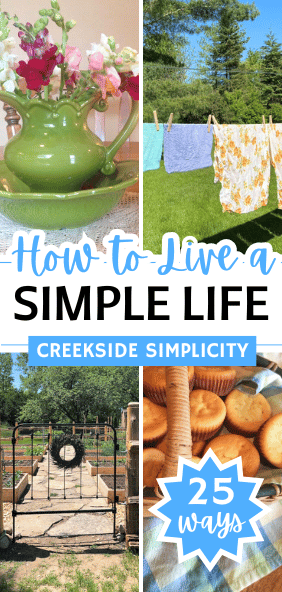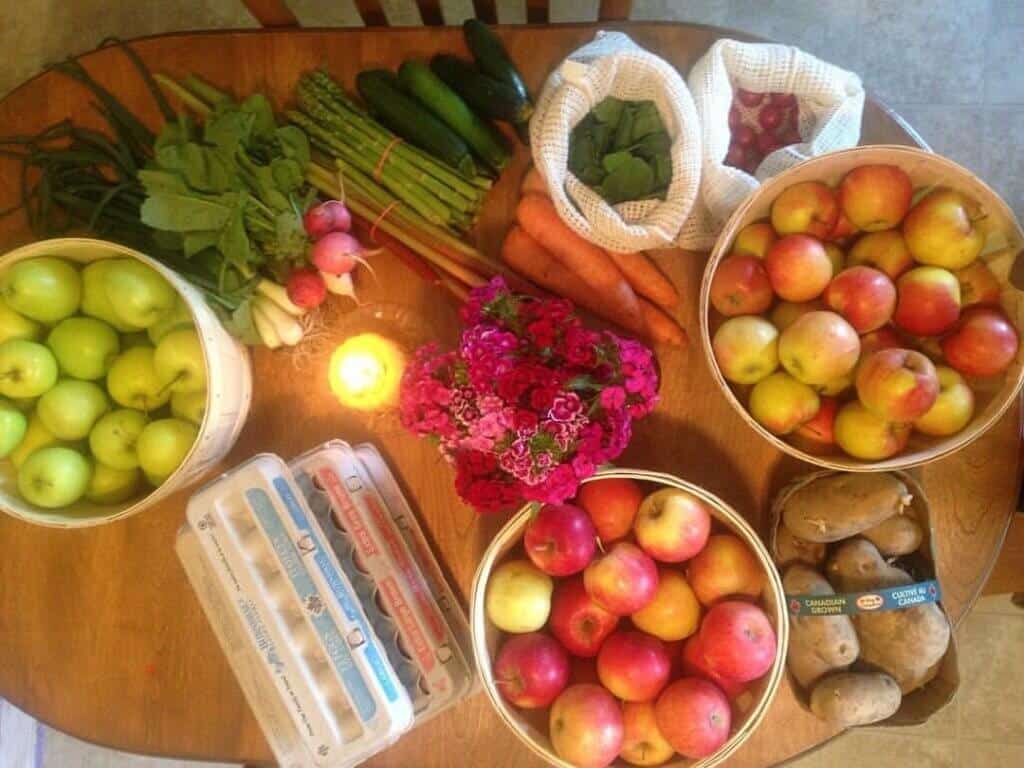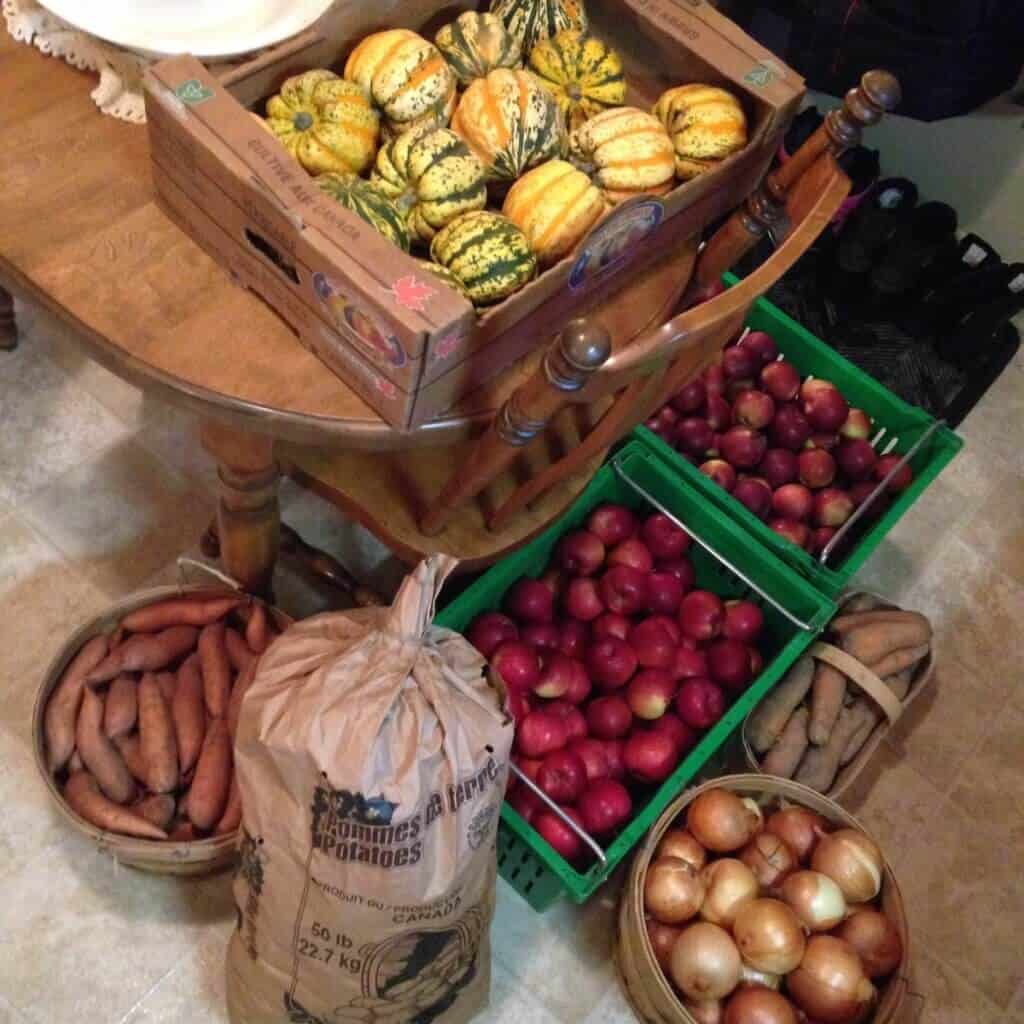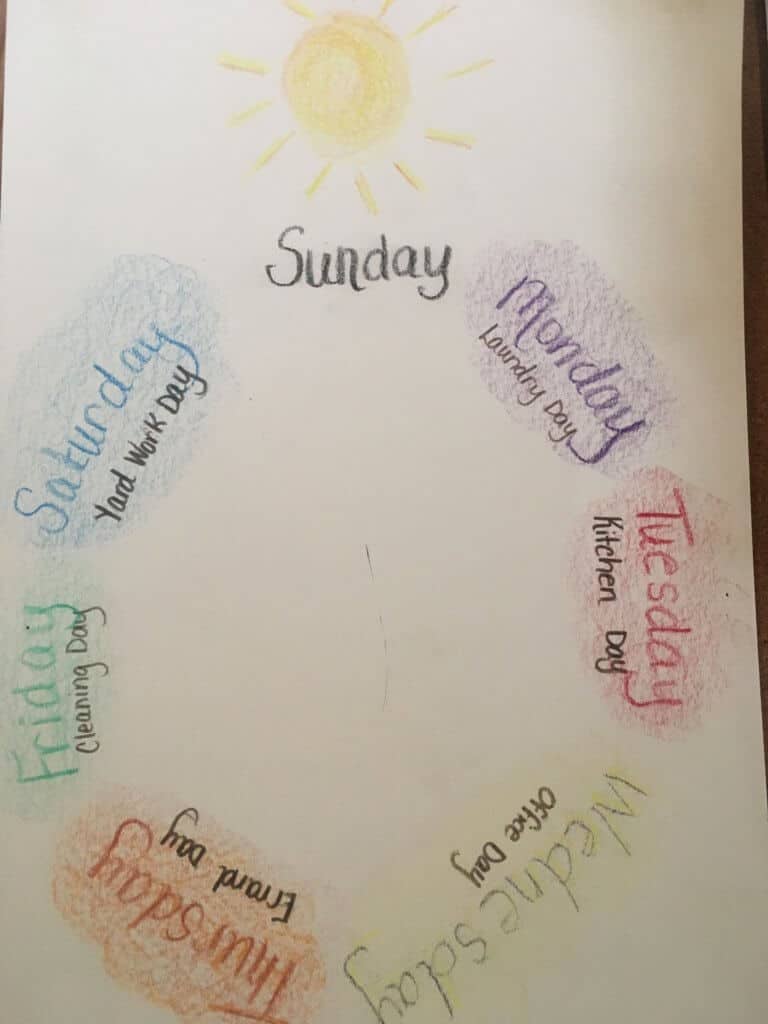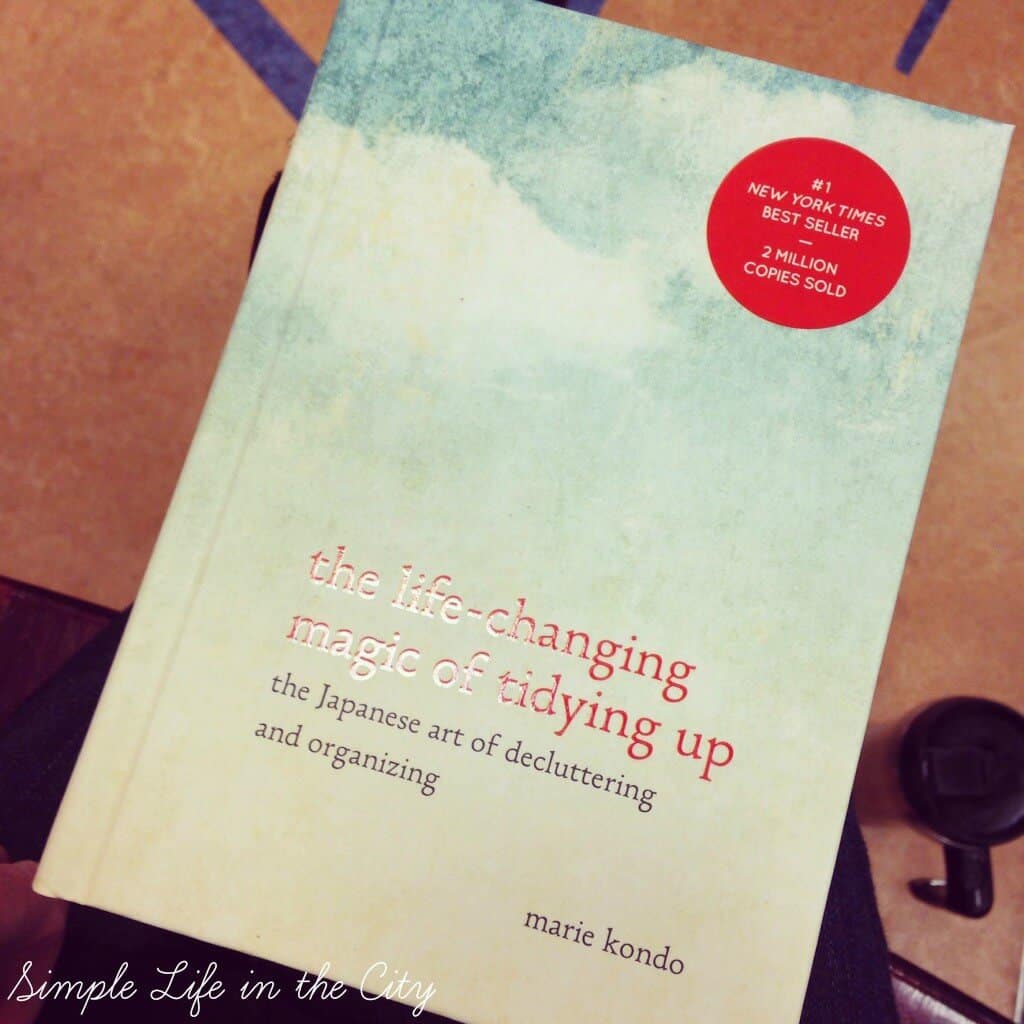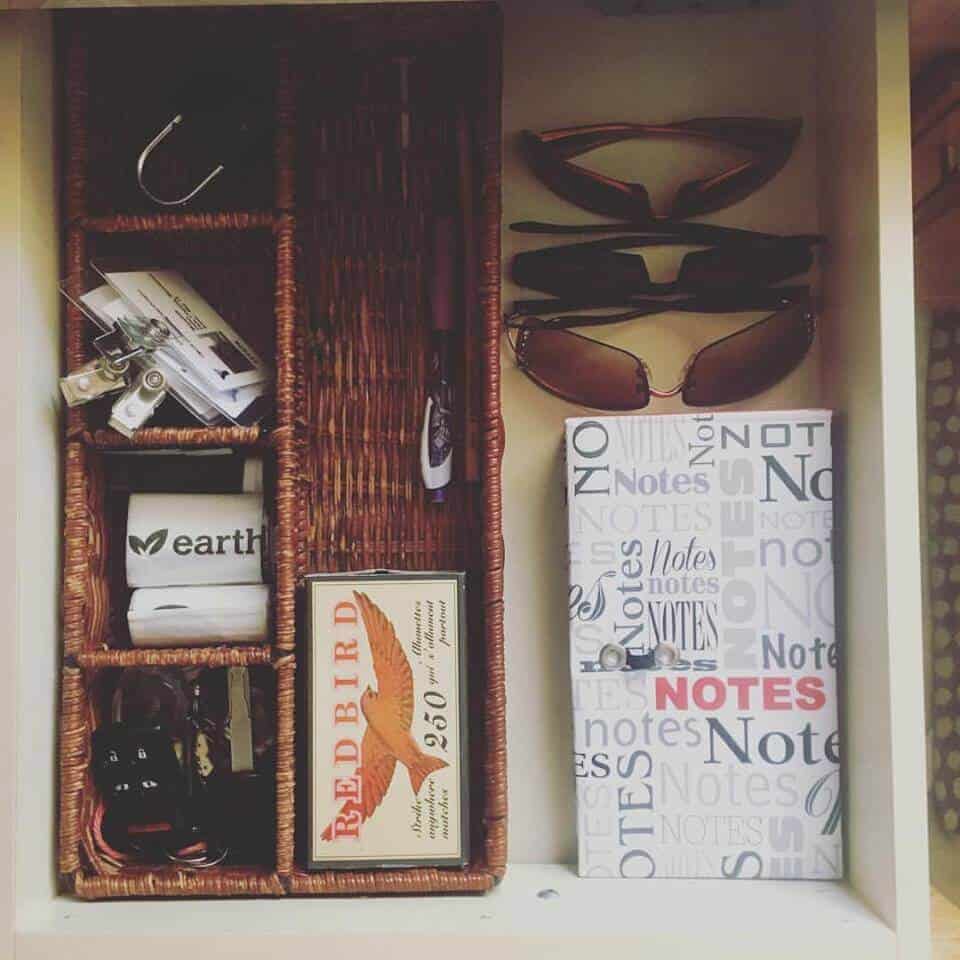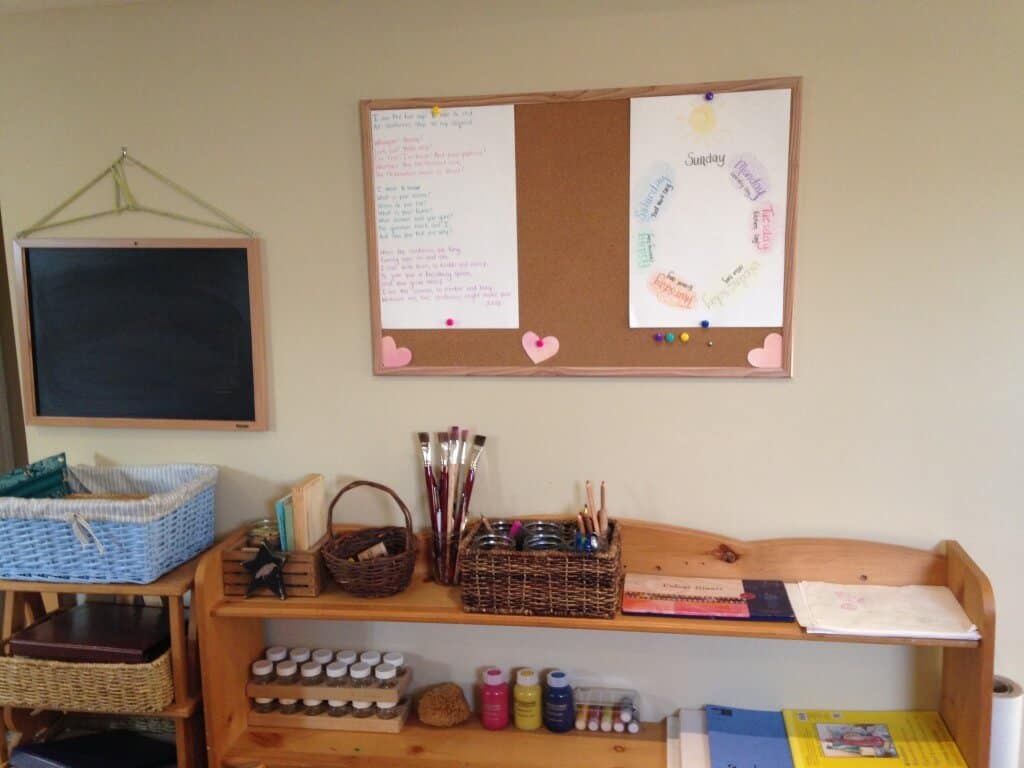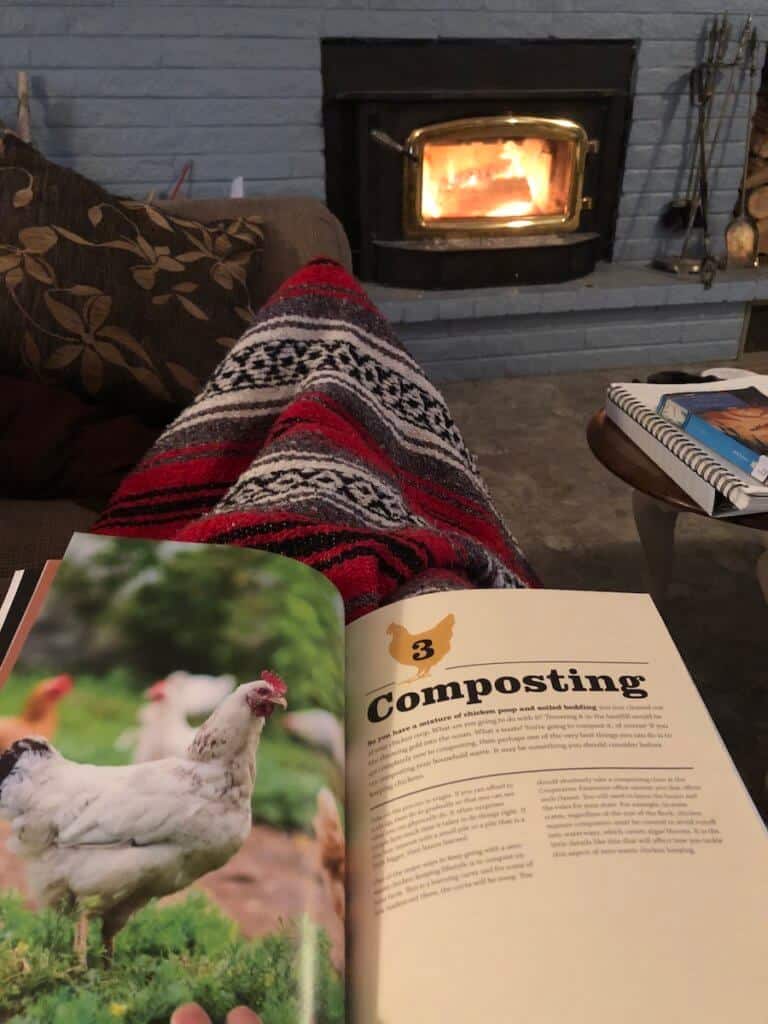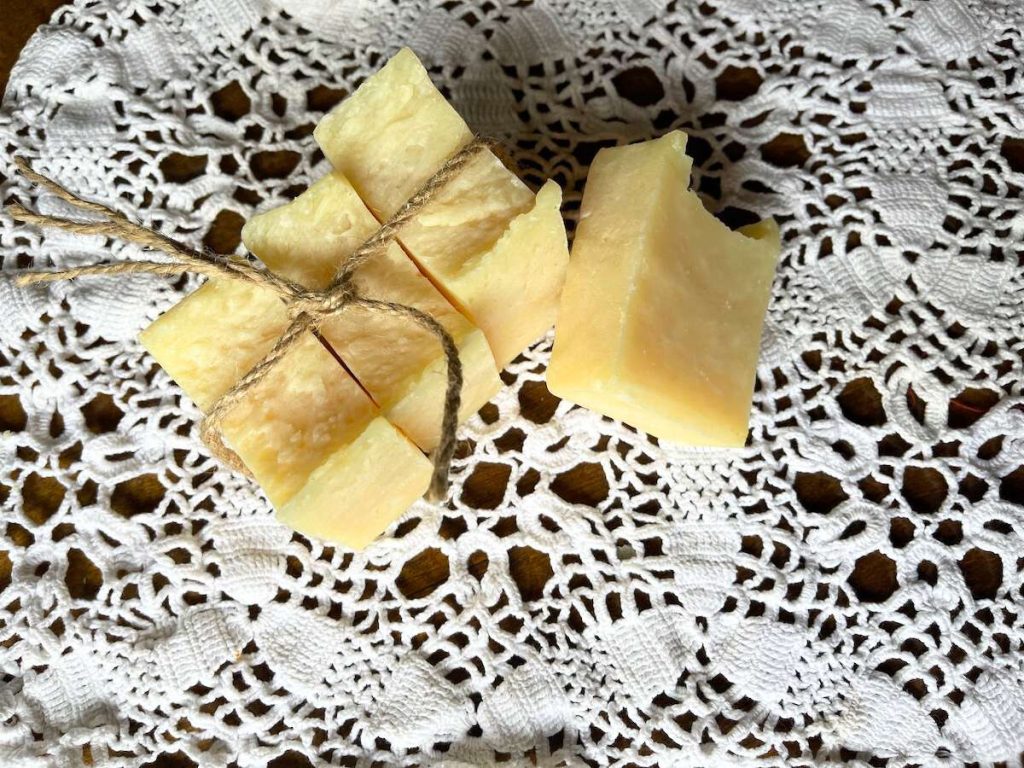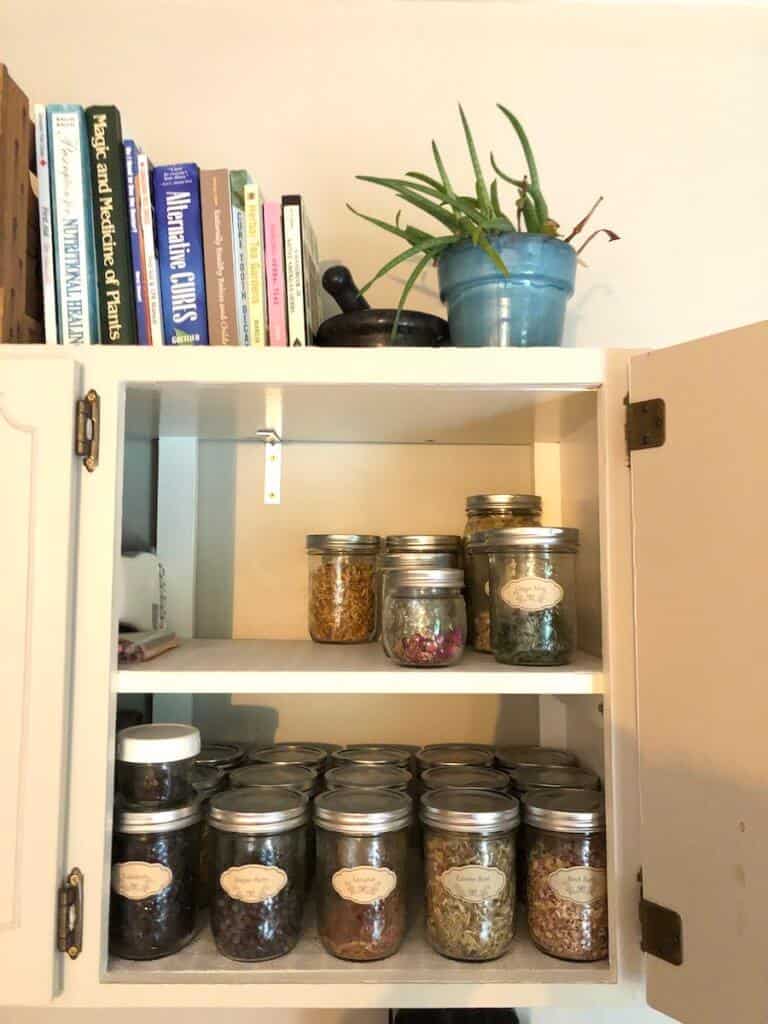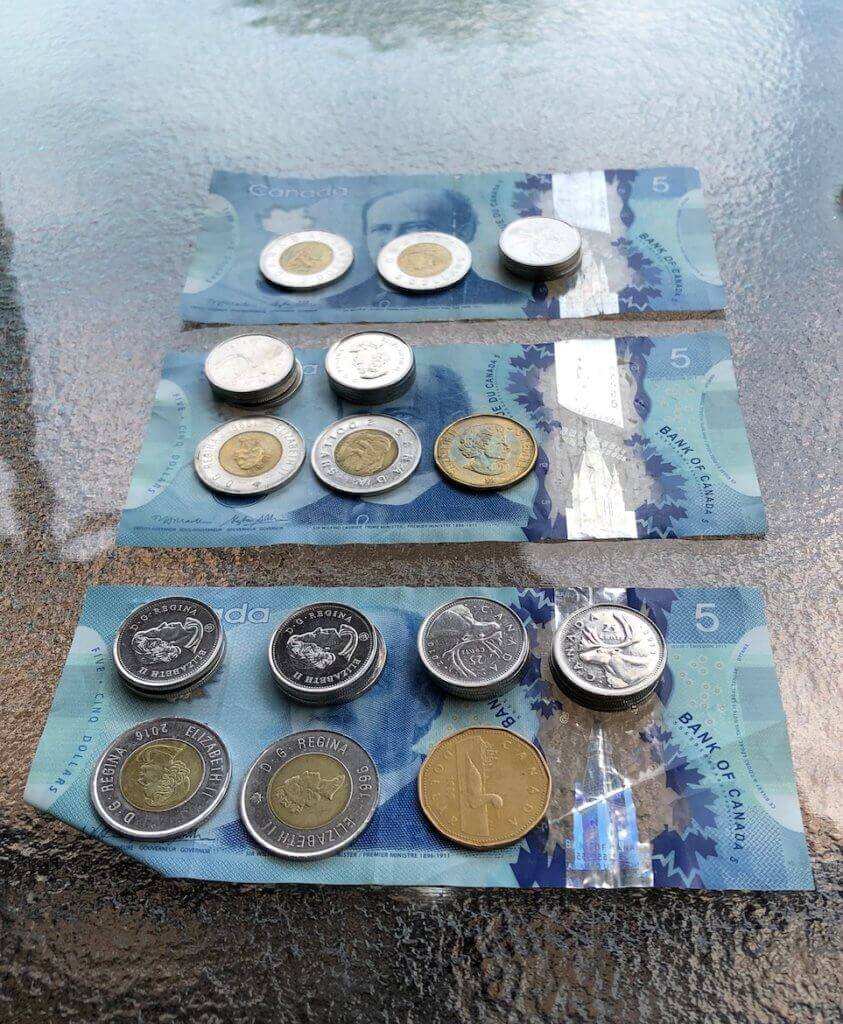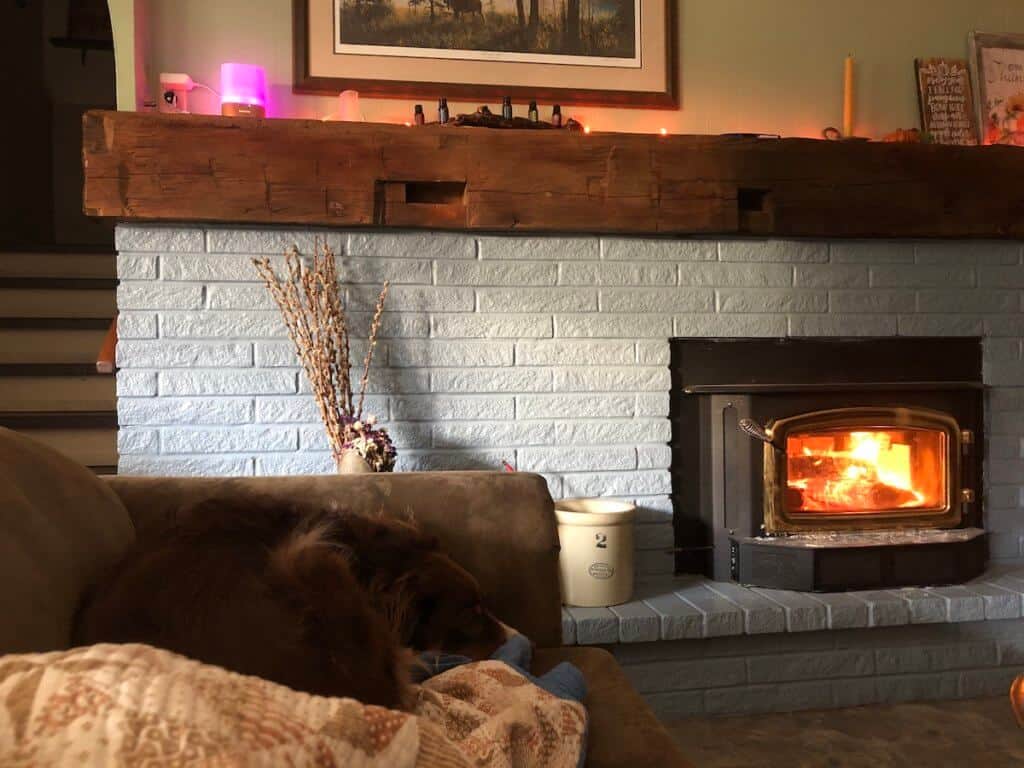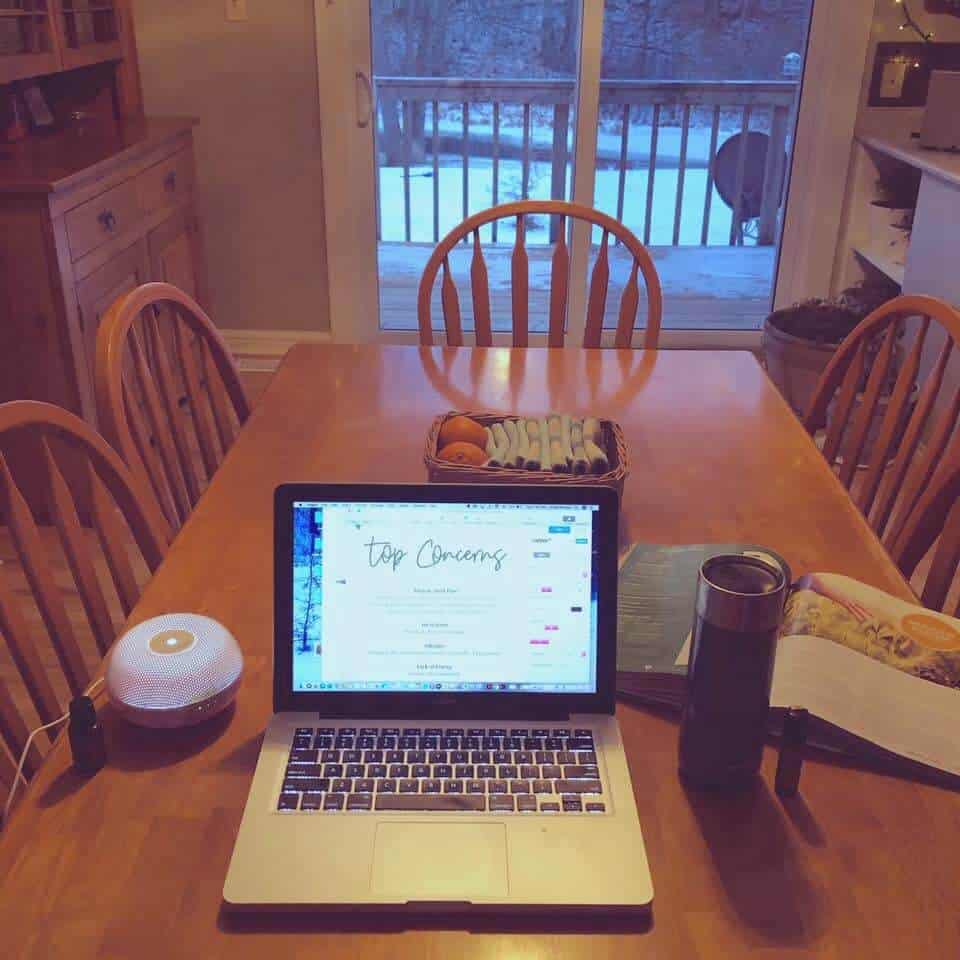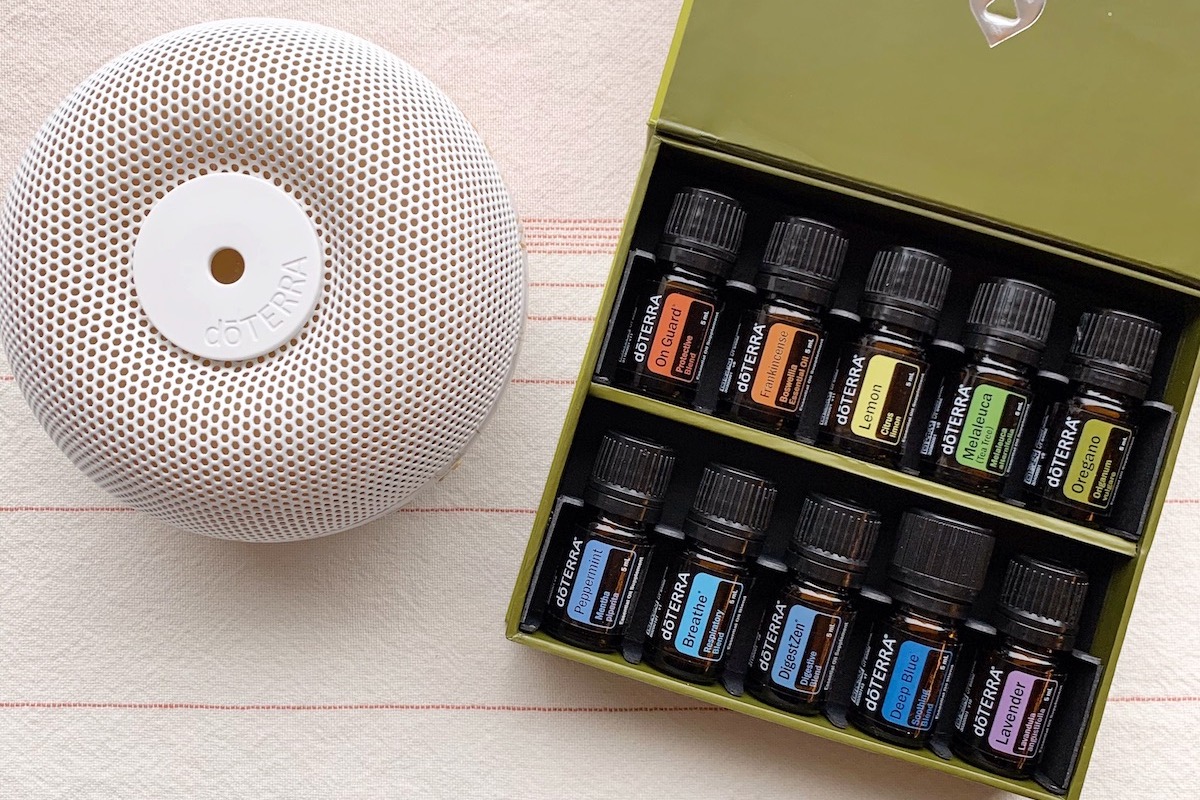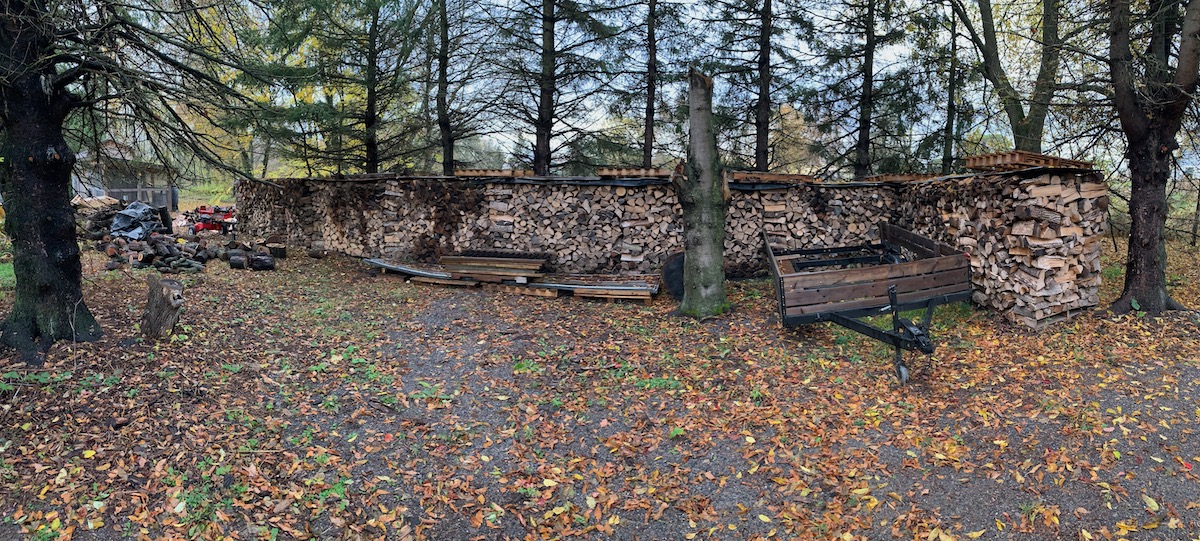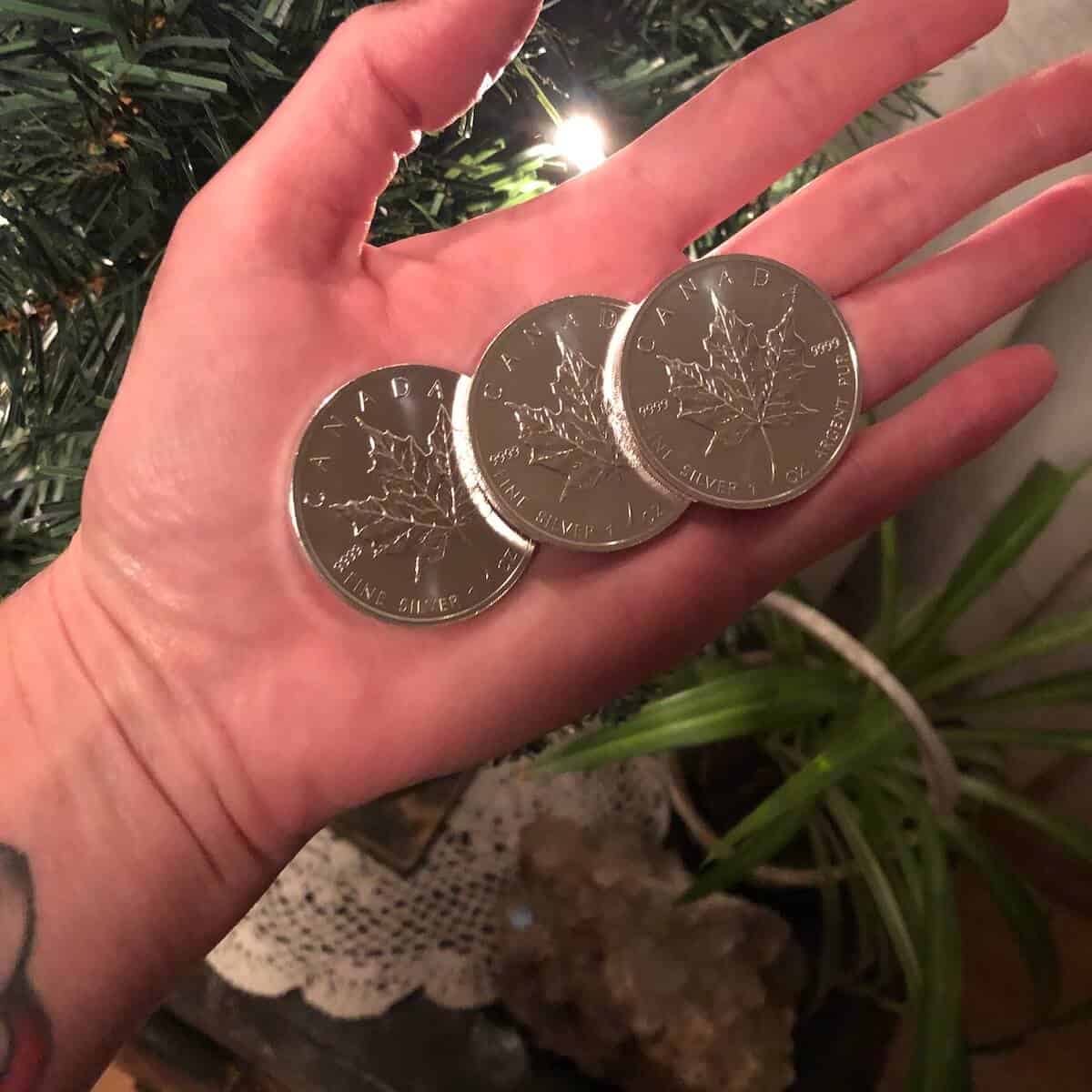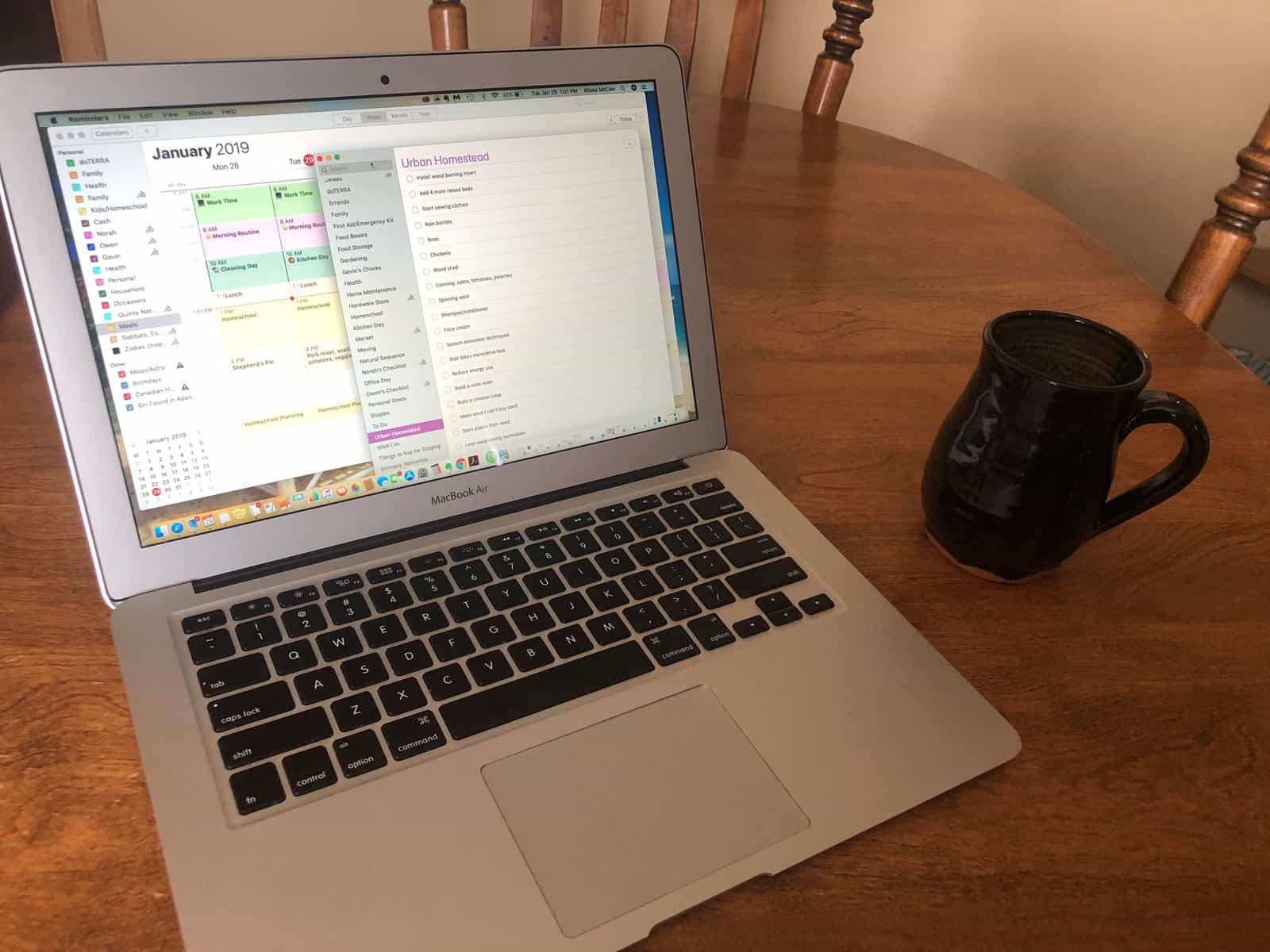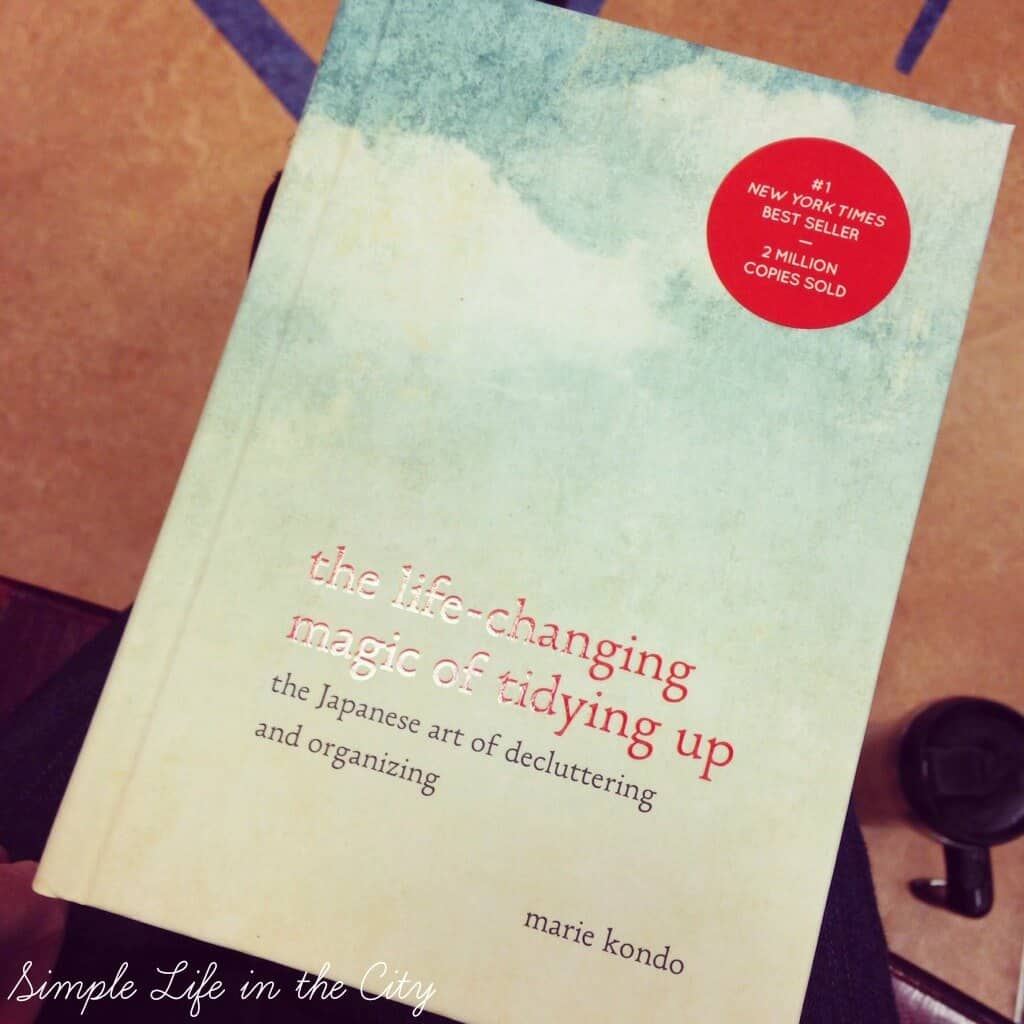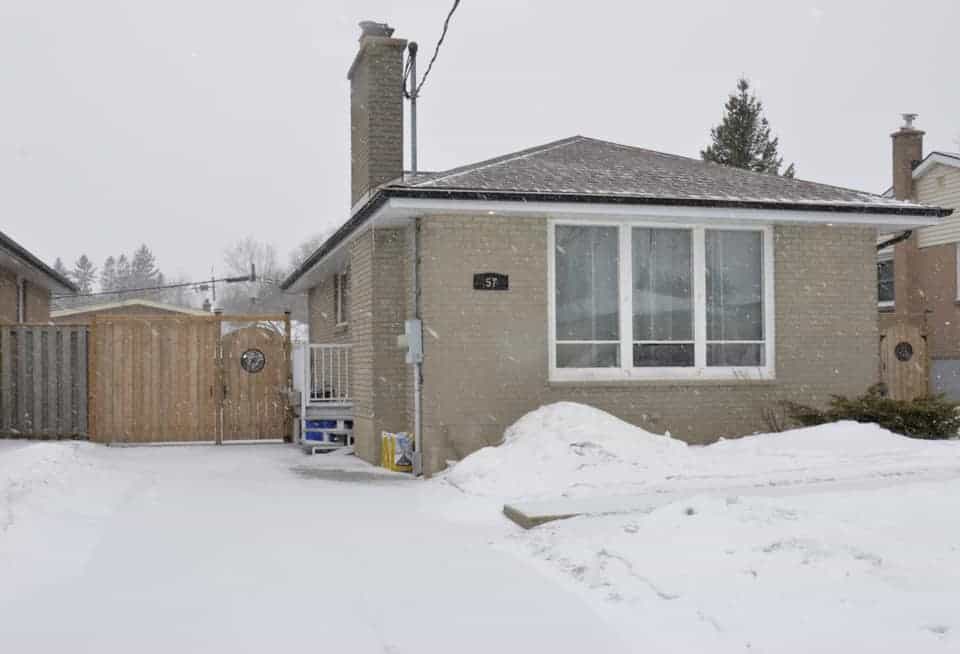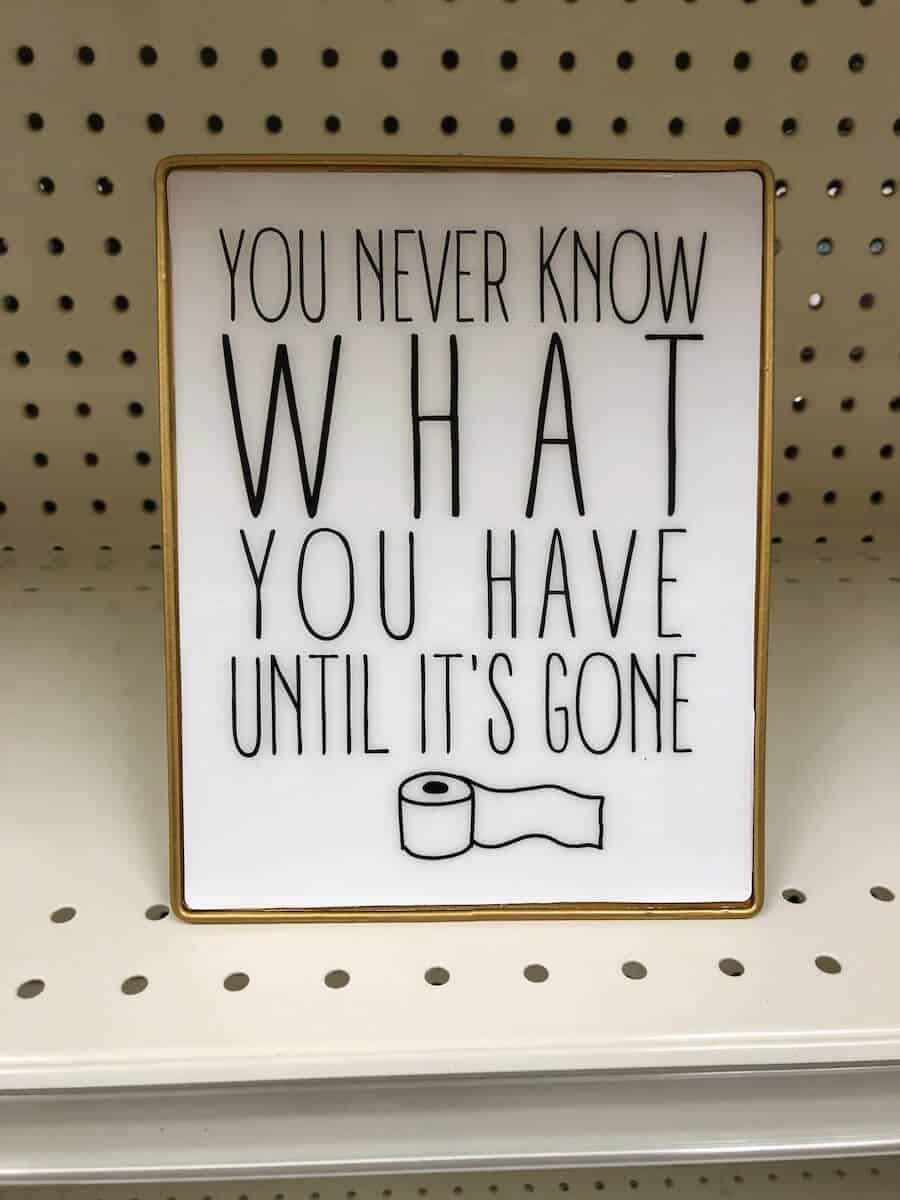25 Ways to Live a Simple Life
What image comes to mind when you think of “Living a Simple Life”?
Is it a big, rambling farmhouse, surrounded by acres of fields and meadows? Horses and goats and chickens? A mile-long clothesline with linens blowing in the breeze? An old farm truck sitting in the driveway? A farm wife with her apron strapped on, kneading bread in the kitchen?
Would you believe me if I told you that none of these things are necessary to live a simple life?
That’s right, you can start living the simple life RIGHT WHERE YOU ARE.
No farm house necessary. All that is needed is a change of mindset.

This post may contain affiliate links, which means if you make a purchase through one of these links, I make a small amount of commission at no extra cost to you. See full disclosure here.
What is Simple Living?
Simple Living is about providing for your own needs directly.
When you work for someone else, you are working for the middle man. You are working a job to earn money, to then turn around and buy the things you need.
What if instead, you could provide some those needs directly, rather than working so you can pay someone else to provide them?
You work so you can pay someone to:
- Sew your clothes for you.
- Grow your food for you.
- Cook for you.
- Do repairs for you.
- Build things for you.
- Provide energy in the form of electricity, oil, and gas.
Perhaps you are working to pay interest on your debts. Or to pay your mortgage.
What if you grew some of your own food and sewed your own clothes (or at least bought them second hand)? How much money would that save you?
What if you learned to do your own repairs?
What if you used tools and equipment that used your own energy rather than that of fossil fuels? (A reel mower, a clothes line, and a wood stove are just a few examples).
What if you were debt-free, including your mortgage?
How much money would you need to live? Could you get by with just working part-time, or maybe switching jobs altogether to something that pays less but makes you happier?
Another term for simple living is Voluntary Simplicity. Voluntary Simplicity is about the pursuit of a more meaningful and less stressful life, by de-emphasizing the accumulation of money and material goods.
Voluntary simplicity is about creating a life of freedom through simple living.
Why Choose a Simple Life?
Do you sometimes feel like you weren’t designed for our modern world?
Do you feel like your current life is not truly making you happy?
Like you are on a treadmill, going nowhere – working hard just to pay the bills and buy a few nice things?
Do you feel overwhelmed with all the things you have to maintain?
Do you feel like you don’t have time to enjoy those things, or spend quality time with your family?
Do you crave a simple lifestyle?
Well I am here to tell you, there is another way. And you can start right now. TODAY.
You can simplify your life, and bring your actions into alignment with your values and your life’s vision, just by making a few different choices.
Let me share with you, 25 ways to live a simple life. Of course, there are many, many ways to live a simple life, but perhaps this will be a spring board of ideas for you.
Food
Food is the cornerstone of simple living.
If you compare our modern life with how families lived just 100 years ago, the biggest difference is how dependent we have become on grocery stores and restaurants to feed us.
1. Start a Garden

For many people, growing a garden is the hallmark symbol of simple living.
Food is something we need on a daily basis, and learning to provide some of that for yourself is a a great first step on your journey to simple living.
When I first started gardening, I was renting, so I couldn’t grow a big garden. I started with some old pots I found, filled them with soil, and planted tomatoes and cucumbers.
Then I bought a small house in town, and installed 4 raised beds in my back yard.
Then we moved to the country, and have now graduated to a much larger garden (which you can see in the photo above), but each step I took allowed me to practice and learn by trial and error.
Not everyone has space for a big garden (I certainly didn’t when I fist started), but the point is, start with something.
Grow some herbs on your windowsill.
Get a packet of mixed lettuce seeds and plant them in a pot on your step.
Plant a cherry tomato in one pot, and some sweet or hot peppers in another.
There – you have just taken your very first step toward living a simple life. 🙂
Growing your own food is the most empowering thing you can do.
It can be a lot of work, but if you’re like me, it will immediately feel like an act of rebellion in this consumer-driven world.
If you’re new to gardening, you can read my tips on how to plan a garden.
We use the Square Foot Gardening method, which you can see in our video here:
(If you’re new to gardening, you may want to check out my Garden Planning post. It will walk you through how I plan my gardens each year).
2. Cook From Scratch

If you’re used to purchasing pre-made foods, try to cook one meal a week completely from scratch.
Use whole ingredients – simple foods that grow from the ground or come from an animal. Try to avoid foods that come with an ingredient list (unless it’s just one ingredient).
We’ve become so accustomed to buying foods pre-prepared, that it will be shocking to realize how many things you can truly make yourself.
Slowly start phasing out processed foods and replacing them with simple, homemade versions.
Each time you run out of something pre-made, think about whether you can make it yourself. (Hint: You can). Pretty much anything you can buy, you can make.
Even condiments are easily made from scratch. They are cheaper, healthier, and will only take a few minutes of your time.
Try to avoid pre-packaged junk food. These are typically loaded with not-so-healthy ingredients.
Cooking from scratch usually requires planning ahead. Having a meal plan helps tremendously.
3. Eat Seasonally
Part of the simple living lifestyle means living more mindfully – and one way to do that is to localize as much as possible. Try to get as many of your resources as possible from local growers and suppliers.
Next time you are at the grocery store, note where your produce is grown before putting it in your cart. Bananas from Costa Rica are ok . Tomatoes? Not so much.
Learn what foods are in season, when. (The best way to do this is to grow your own – there is no mistaking that a tomato won’t grow in February in Canada!). But if you’re not growing your own, your local farmer’s market is the next best option.
Find out what days they are open, and go! Wander around, see what the offerings are, and introduce yourself to the farmers. 🙂 You know, the people who grow the food. You don’t get to do that at the grocery store!
If you go every week, you will notice the produce changing, and soon you will be in tune with the rhythm of seasonal food.
Before we had our own homestead, we lived in a small house in town on a tiny lot, and I couldn’t grow a whole lot of food. I visited our farmer’s market weekly, and made some amazing connections with our local farmers.
They were always happy to answer my questions (no matter how silly they were!), and even helped me learn about food preservation techniques.
Your farmer’s market is one of the most valuable resources in your town. Make sure you take advantage of it!
4. Buy Food in Bulk
Whatever is in season, buy lots of it. Can it, freeze it, store it. You will cut your grocery bill in half.
As you build up your family’s food storage, you will be less reliant on grocery stores.
This also helps you be more prepared, in that you have created a buffer between you and financial hardship. If you get ill, or lose your job, or there is some kind of natural disaster – your family will at least have food in their bellies.
Buying in bulk also means you can grocery shop less often. We do the bulk of our grocery shopping just once a month. Over the course of a year, this has saved me countless hours of time spent at a grocery store.
This also simplifies meal planning, as I base our weekly meal plan around what we have in our basement grocery store.
5. Learn to Preserve Food

Food preservation might seem daunting if you’re new to living a simple life.
It also seems antiquated – but you’d be amazed how many people are reviving this old-fashioned skill.
Start with things your family uses a lot of, like maybe pickles, salsa, or ketchup.
Canning condiments is a great place to start, because they are typically high acid, meaning you only need a water bath canner, not a pressure canner.
Fermentation is another great skill to learn. It’s so easy, because it only requires a jar, some vegetables, and salt.
Energy
6. Give Up Your Dryer
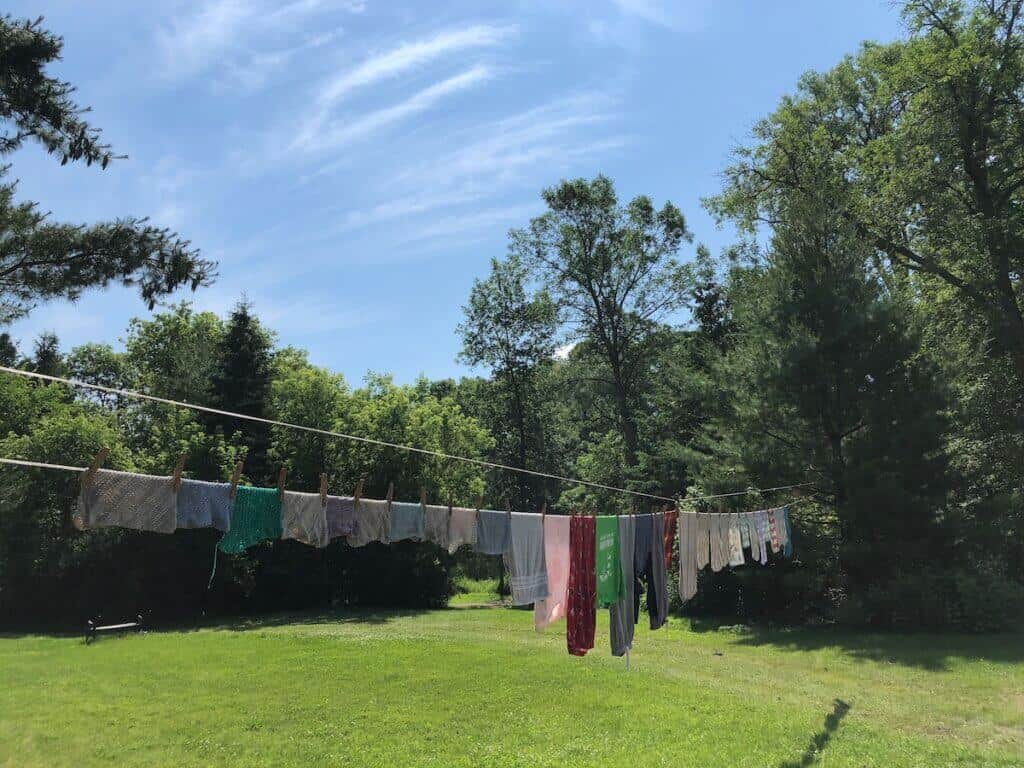
Ok, maybe you don’t have to give it up altogether, but could you use it less?
Get yourself a (good quality) indoor drying rack.
I have one similar to this:

Heavy Duty Gullwing Drying Rack, White Metal
Buy Now →In the winter, I set it up in front of our wood stove. In the summer, it sits on the patio under our back deck, so I can still use it on rainy days when I can’t use the clothes line.
To hang your laundry to dry, take the clothes out of the washing machine, give them a good snap, and hang them up on your drying rack or clothes line.
Air is free! Your dryer is just very expensive hot air.
No, your clothes won’t be dry in an hour, but if you do a load every day, yesterday’s load will be dry by the time you are ready to hang today’s.
Do you have a place to install an outdoor clothesline? Or maybe you are super lucky and your house already has one? Lucky you, you can get the fresh air scent for FREE!! 🙂 And outdoors your clothes will be dry in just a few hours.
Air drying your clothes does mean that you need to be more organized about your laundry routine. If you have a large family, you can’t save up all your laundry for one day and do it all at once (unless you have a very large clothes line, or multiple drying racks).
Our family of 5 generally does 2-3 loads of laundry every single day. There are 5 of us, plus things like bedding, towels, kitchen laundry, cleaning rags, etc.
We use this simple laundry routine to stay organized.
7. Pay Attention To All the Gadgets You Plug In
What did people do before they had those gadgets?
Are there non-electric alternatives to some of the things you plug in?
Take a look around your home and see what’s plugged into all your outlets.
Can you unplug some of them? Can you do without them altogether?
Here are some examples:
Replace Your Coffee Maker with a Kettle and French Press
I absolutely love our Frieling French Press. It’s 100% stainless steel. I try really hard to buy things with no plastic parts when I can. When you buy good quality, it lasts a lifetime, and you’re not throwing money away replacing things.
 Buy Now →
Buy Now → Use a Hand Mixer
Replace your electric mixer with one of these hand mixers, easily found at any thrift store.
They’re inexpensive, fun to use, and you’ll feel a bit nostalgic while beating your eggs.


Norpro Egg Beater Classic Hand Crank Style 18/10 Stainless Steel Mixer 12 Inches
Buy Now →Use Oil Lamps
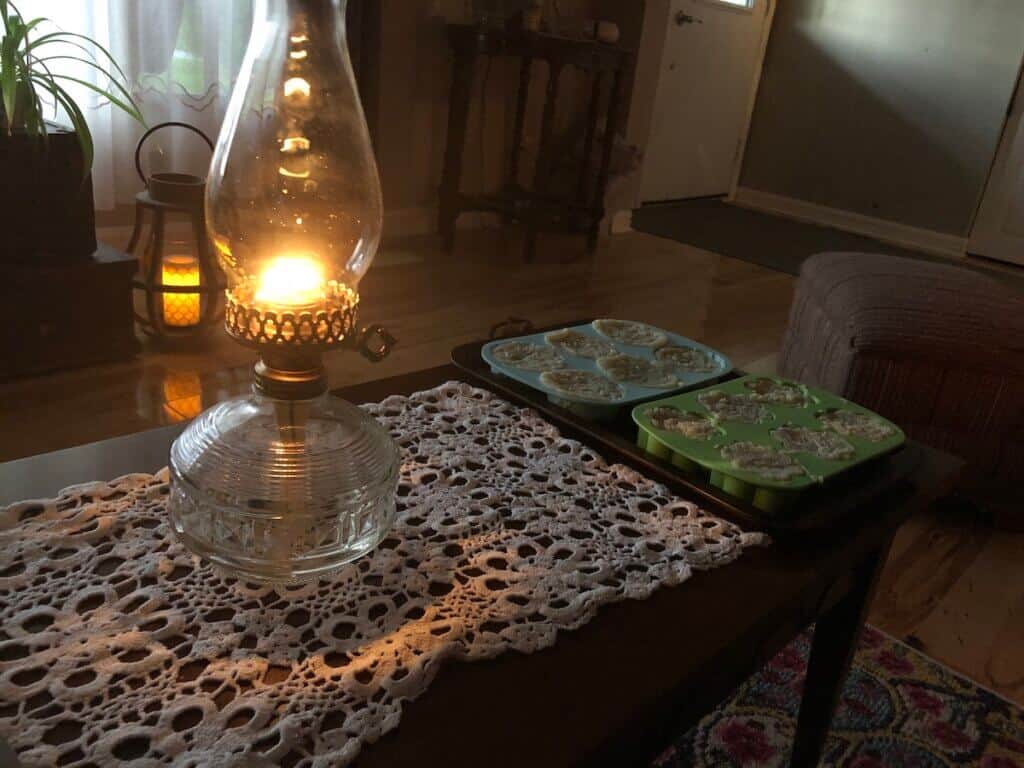
Oil lamps create a wonderful feeling of nostalgia and coziness.
You can find them in all kinds of places – yard sales, antique shops, thrift stores, or auctions.
Get yourself a few and learn how to use them. They are very simple technology, and our pioneer ancestors relied on them for lighting.
Be sure to use them safely. I only use them if I’m in the room where they are lit, and I make sure they are not in a place where they might get bumped or knocked over.
You will have to buy oil and wick but at least you aren’t giving your money to the electricity company.
Clothing
8. Buy Clothing Second-Hand
This is especially helpful for kids who grow so quickly!!
With the exception of socks, underwear, and running shoes – almost all of our family’s clothing is purchased second-hand.
This saves us thousands of dollars each year in clothing costs, plus it helps keep used clothing in circulation and out of landfills.
Often we can find higher quality items for far less money than what we could afford if we purchased new.
Some thrift stores are better than others, so do the rounds and see which ones you like best. I’ve found Value Village has really gone downhill in recent years. Their store is poorly organized, the clothing is low quality and over-priced. The best thrift stores seem to be the not-for-profit ones, usually run by churches or Christian schools. They are the most affordable, and you can often find very nice items.
Yardsales and Facebook Marketplace are two other places that are great for second hand clothing. This is often where we find things like coats, boots, and bigger-ticket items that we might not find at a thrift store.
9. Mend and Make Do

Often times, clothes just need a little repair job, and then they will be as good as new.
A patched knee, a sewn button or a repaired zipper can give clothing another lease on life.
Learning to do these simple repairs is as easy is going to YouTube and finding some videos. Even though I can sew, I often still do this if I’m feeling unsure about something!
You don’t even need a sewing machine; most small repairs can be done with a needle and thread.
I would recommend investing in some good quality thread though – dollar store thread just won’t cut it. It’s poor quality, breaks easily, and you’ll end up having to re-do your repair multiple times.
I swear by Gutermann thread for all my sewing.

Gutermann Thread Set: Extra Strong: 7 x 100m
Buy Now →10. Reduce the Amount of Clothing You Have

You’ll be amazed how much this one step will simplify your life.
How often do you stare at your closet full of clothes, and think “I have nothing to wear!”?
That’s because having too much to choose from is overwhelming.
When we pare down our clothes, we have less laundry, less clothing on the floor, less things to take care of and keep tidy, and less overwhelming choices for both you and your children.
We really need very little clothing!
Take the time to go through each clothing item one by one, and only keep the items that spark joy.
Our general philosophy is we strive to have enough clothing to last us a week without doing laundry.
So whatever quantity that means for each person is what we go with.
Young children tend to be messier and need to change clothes more often. Older kids and adults can get away with less clothing, because they don’t need to change as frequently.
Things like jeans don’t need to be washed every time you wear them. I find that 2-3 pair of jeans, rotated throughout the week, is plenty.
Rhythm and Home
11. Create Daily, Weekly, and Seasonal Rhythms for Your Home.
Daily, weekly, and seasonal routines are the cornerstone of simple living.
Begin with your daily routine. These are the tasks that need to be done every day, no matter what. Your non-negotiables. Usually this is divided into morning and evening routines.
Your morning routine might include things like making your bed when you get up, brushing your teeth, getting dressed, emptying your dishwasher, feeding your pets, eating breakfast, and doing one load of laundry.
Your evening routine might include cooking and cleaning up dinner, prepping your coffee pot for morning, and maybe taking a nice bubble bath as you wind down for the evening.
Make yourself a list of all the things you do, or should do, on a daily basis.
Next, you’ll layer in your weekly routines. These are things that don’t need to be done daily, but should be done at least weekly. Things like dusting, vacuuming, paying your bills, running errands, and weeding your garden will fall here.
You’ll want to figure out which days of the week align best with each of your weekly tasks.
Finally, there are your seasonal tasks. These are the things that really only need to be done once a season, or less. Things that fall here would be going through your family members’ clothing to get rid of what isn’t worn and no longer fits, and make a list of what replacement clothing needs to be purchased. Changing out your seasonal decorations. Changing your furnace filter. (This should really be done monthly, so you can create a separate monthly list if you’d like).
Once you have your simple routines in place, life will feel calmer and your home will run more smoothly.
You will know what needs to be done each day, week, and season, and you’ll no longer feel stressed about your seemingly endless to-do list.
Routines are the back bone of a simple life. You want to get to a place where completing your routines becomes so automatic that you barely have to think about them, which then frees up mental space to move on to other tasks.
12. Reduce Clutter
Your physical space is very important to the concept of simple living.
Physical clutter creates mental clutter.
I’m a huge believer in creating a calm, peaceful environment in our home. And clutter and peace simply cannot co-exist.
When you experience the peace of mind that having less clutter creates, you will no longer want to accumulate material possessions just for the sake of having them.
Let me clarify, though: I am far from a minimalist. We are homesteaders, and homesteading requires a certain amount of tools and supplies.
But I do try my best to keep our living spaces organized and tidy, and to not accumulate excess. (Although that is sometimes a constant battle when you have kids!).
The less time you spend moving and organizing clutter, the more time you have for the important things.
“Have nothing in your house that you do not know to be useful, or believe to be beautiful.”
― William Morris
13. “A Place for Everything, and Everything in its Place”.
Further to the above, once you have cleared the clutter, it’s important to make sure that whatever you have left, has a home.
It’s so much easier for everyone in your family to keep things tidy if they know where things go.
If you frequently notice things laying around, ask yourself: Does this have a home? If yes, what is preventing someone from putting it there? (Sometimes it’s because its home is an inconvenient place, or too far out of the way – maybe making its home more convenient would make it more likely to be put away).
If it doesn’t have a home, you have 2 options: find a home for it, or discard it. We only have a limited amount of space in our homes, so it’s important to make sure we are only keeping things that we love, or that are truly necessary.
14. Reduce Your Waste

Most people don’t think about the amount of things they throw away.
Every week, they take their large garbage bag to the curb, and never wonder where it goes, or what happens to it after that.
Part of simple living, is mindfulness. Trying to be less of a consumer, and more of a producer.
We have increasingly become a throwaway society: Disposable rags (paper towels, wet wipes), disposable food packaging, disposable razors, take-out containers, and so much more. When you think about how wasteful we truly are, it’s mind-boggling.
Reducing waste begins before you even leave your house to go shopping – make sure you have all the bags and containers necessary to bring your purchases home without packaging.
I purchase a lot of our durable, plastic-free, last-a-lifetime items from Life Without Plastic.
Food creates the largest amount of waste. Almost everything you buy at the grocery store (even produce!), comes in some kind of packaging. By growing your own food, and learning to preserve it yourself, you will notice a drastic reduction in your family’s waste output.
Mason jars are infinitely reusable (if you care for them properly, and avoid cracking or chipping them), and you can even get reusable canning lids, so you don’t have to throw those away either.
I have a whole blog post you can read about simple ways you can reduce your waste.
Challenge yourself to see if you can reduce the frequency you take your garbage out, simply by being more mindful of the products you use.
Education
Education is a very important part of simple living.
In a sense, you have to become a ‘Jack-of-All-Trades’. There is a lot to learn, but the good news is, you can do it a little at a time. Each little change you make, is one step toward living a simpler life.
15. Consider Homeschooling your Children
I realize this might seem drastic if you’ve been immersed in mainstream culture and the education system. But hear me out.
Homeschooling simplifies SO many things.
We have so much more time, and freedom. Less things to buy. It helps us be closer as a family. We can go on outings during off-peak times, which saves money, and places are less busy.
Homeschooling is becoming more and more mainstream these days (much more so than it was when I started 15 years ago). You will have no trouble finding a community of homeschoolers to connect with for outings and social gatherings.
My kids are able to learn a lot of simple living skills because they are home with me.
If I was ever ill, my 3 kids (who are now teens) are perfectly capable of running the house without me. They know how to cook, clean, keep the wood stove going, chop and stack firewood, grow and harvest food, and they even know how to can food.
They are completely responsible for caring for our chickens and ducks, and all the tasks that go along with that. My oldest hatches and raises our chicks and ducklings.
These are skills they definitely would not have had time to learn if they were in a classroom all day.
Homeschooling is very efficient, and can often be completed in 1-4 hours per day, depending on the ages of your children. So much hands-on learning happens naturally on a homestead, which means the basic academics, like math, language arts, and science – take very little time.
There are tons of curricula available for purchase. Our family uses Waldorf Essentials.
16. Frequent Your Library
Libraries are such a fantastic community resource. Not only can you borrow books for free, they often run various programs to help you learn different skills. Our local library even has a monthly gardening club meet-up!
You never know what you might find at your local library – and if they don’t have what you’re look for – ask! I find librarians are always receptive to suggestions and feedback.
Natural Living
For some people, their health is the reason they are pursuing a simple life. The stress and toxicity of modern life can sometimes push us past the breaking point. We can become physically, mentally, and emotionally unhealthy.
Creating small changes in your health habits can create a big impact.
17. Make Your Own Personal Care and Cleaning Products
Some people spend a lot of money on personal care products and cleaning supplies.
This is one of the simplest changes you can make at home. You can make your own personal care and cleaning products for much less than you can buy them, and they will be much healthier for you, too.
Basic ingredients like essential oils, vinegar, baking soda, coconut oil, olive oil and beeswax are all you need!
Once you have these basic items on hand, the sky is the limit.
It’s so freeing to not have to go down the personal care or cleaning product aisle at the grocery store. When I run out of something, I just make more.
I have even learned how to make my own soap in a crock pot, using just 3 ingredients.
18. Be Proactive About Your Health.
Stay healthy by eating whole foods, avoiding toxins, and arming yourself with natural remedies like garlic, chicken broth, herbs, and essential oils.
So much of what we need to stay healthy is not found at a pharmacy, but in our own back yards.
Toxins are one of the biggest assaults on our health, and one of the things I’m most passionate about avoiding.
There are so many toxins lurking both inside and outside our home, that it can feel very overwhelming to even know where to begin.
Essential oils are a key component of our family’s health care, primarily because they are so versatile.
I can use them to make cleaners, bug spray, soap, and skin care products. I can use them to treat bug bites, bee stings, and bloody noses. When I diffuse them, they purify the air in our home, and uplift our mood at the same time.
They are highly concentrated (one drop of peppermint oil is the equivalent of 28 cups of peppermint tea), which makes them very affordable, as one drop goes a long way. (A 15 ml bottle of essential oils contains about 250 drops).

Finances
The ultimate goal of living a simple life, is to create financial independence. Financial independence exists on a continuum, and every step you take toward being less dependent on others to meet your family’s needs, the better off you’ll be.
This is the key to creating freedom with simple living.
This doesn’t mean becoming wealthy. In fact, it’s often the opposite of that.
The ultimate financial freedom comes from not needing money at all.
Of course, living with zero money is unrealistic. But the more you produce yourself, the less money you need. And that is the goal.
Every tomato you grow, every hole you mend, every load of laundry that gets hung to dry instead of being tossed in the dryer – means less time you have to spend at work, earning money to pay for those things.
If you think of each thing you purchase in terms of the hours of your life you had to spend working to pay for it, it gives you a very different perspective on money. We don’t pay for things with our bank accounts, we pay for them with hours of our lives. And we only have so many of those.
It’s also wise to simplify your finances as much as possible. The more we simplify our finances, the less mental space it takes up.
19. Use Cash
Try to avoid using plastic to pay for your in-person purchases.
Using real, actual cash makes it easier to see exactly how much your are spending, and how much you have left to spend. It’s tangible, and much easier to feel the pain of spending vs. just using numbers on a screen.
20. Create a Budget
If time is our most valuable resource, then our money is a close second. Just as you want to create a plan for how you spend your time, you want to do the same for how you spend your money.
It is impossible to be intentional about your money without a written plan.
Knowing where each dollar goes is critical to living a more intentional life.
I highly recommend the envelope method for budgeting! We use a great tool called YNAB to organize our budget.
Each month, we give all our dollars a job. It helps us clearly see what our priorities are, based on how we are spending our money. And if there isn’t enough to go around, then we have to take a closer look at our priorities and make adjustments.
21. Avoid Debt
If you are only using cash, this should be easy – but in general it is much easier to live simply if you stay out of debt (or get out of debt if you already have some). I realize this is easier said than done, but being debt-free gives you the freedom to make choices.
Debt is slavery. If you have any debt (outside of a mortgage), I highly recommend checking out Dave Ramsey’s 7 Baby Steps. These simple steps will get you out of debt, and on the road to financial freedom.
Cut up your credit cards. I know, I know – but the rewards! Once I realized that nothing is free – including credit card rewards, I was less inclined to care about them.
Reward points are typically paid for with merchant fees. The average credit card processing fee is 1.5% to 3.5%, or sometimes even higher. Rewards cards cost merchants the most in terms of processing fees! And guess what? They have to recover their costs, so they roll those expenses into the cost of the goods you’ve just purchased, and swiped your credit card for the “free” rewards.
Modern debit cards usually have a Visa or MasterCard logo, and carry the same protections as a credit card when it comes to making purchases. Many debit cards even offer purchase insurance. And if you experience fraud, there is protection for that, too.
Our family’s system is that we use cash for all in-person transactions (when we are physically handing payment to a merchant), our debit card for all online transactions (where you can’t use cash), and our bills come out of our checking account automatically.
This drastically simplifies our finances. No credit card bills to pay at the end of the month.
The less debt you have, the more money stays in your pocket, and the more freedom you have.
22. Prepare for Emergencies
One thing that sets self-reliant folks apart from ‘regular’ folks, is that self-reliant folks tend to be prepared for emergencies.
Whether those emergencies are financial, illness-related, weather-related, or any other type of emergency.
The general recommendation is to have 3-6 months worth of expenses saved in a bank account.
However, it’s wise to diversify your emergency fund. Precious metals are a great hedge against inflation and a fun way to grow your savings.
Our 6-12 month food storage is also part of our emergency fund, since in the event of illness or a loss of income, we could get by with minimal grocery spending.
Having alternative ways to cook and heat your home should also be part of your preparedness.
23. Be Self-Employed
Being self-employed is one of the best ways to simplify your life.
(Don’t confuse simple with easy, though! Self-employment takes a lot of discipline and intrinsic motivation).
However, self-employment allows you to create a flexible schedule that you control. It allows you to design your own life, rather than letting an employer design it for you.
It gives you more control over how much you pay in taxes, since business expenses are tax-deductible.
You can likely figure out a small business you can do from home, which eliminates the costs and time constraints of going out to work. You save on gas, wear and tear on your vehicle, clothing purchases, lunches out, and all the random collections/gifts/donations that often happen in the workplace.
Working from home would also allow you to homeschool your children, if you desire to do that, as well as engage in some of these simple living tasks.
I have been able to be home with my kids their whole lives – first by having a network marketing business selling essential oils, then by starting this blog.
24. Avoid Taxes
No, I don’t mean in the illegal sense – although what choices you make in that regard are entirely up to you.
But there are plenty of legal ways to avoid taxes.
You may think that your biggest monthly expense is your mortgage, or your groceries.
But, in fact, it is taxes.
Depending on where you are, you may have different taxes than we do here in Canada – but it seems we get taxed on everything (including taxes themselves).
We have:
- Federal & provincial income taxes (20-46% depending on your tax bracket)
- Sales tax (13%)
- Carbon tax
- Licenses & registrations (dog tags, fishing licenses, building permits, garbage bag tags, burn permits etc)
- Property tax
- Inflation (yes, this is a sneaky form of tax)
You can save a ton of money by finding ways to reduce taxes in each of these areas. (I am planning a blog post on that soon – be sure to subscribe to my newsletter to be notified of new posts!).
Relocate
I purposely saved this one for last, since uprooting your family and moving is certainly not the first thing you should consider when it comes to living a simpler lifestyle.
25. Move to a Small Town or a Homestead
There are many, many small steps you can take that are easier and more affordable than packing up all your family’s possessions and moving.
In fact, everything I’ve mentioned so far, you can do right where you are. Even if you live in an apartment, with nothing more than a balcony to grow a few pots of tomatoes and lettuce.
However, if you currently live in a city, as you slowly implement these changes in your life, you may find that you long for peace in other ways.
City life is convenient, but busy!
There are loud noises. Small yards. Pollution. Few trees and natural spaces. City ordinances.
As you baby-step your way toward simple living, you may eventually get to the point where you are ready for more space, more trees, more fresh air, more birdsong, less traffic, and less stress.
When you reach this point, you may wish to consider relocating.
There are tons of benefits to small-town living. It is a wonderful way to have less stress, while still enjoying many of the benefits of modern life.
Living on the outskirts of a small town is even better – you can have a little bit of property to increase your food production, maybe get a few chickens, and still be close enough to town to run to the hardware store or the post office when you need something.
Welcome to Your Simple life!
I hope you found these simple living tips helpful!
These are just a few suggestions, but really, the sky is the limit! The secret is to just pick something and start.
Learning to live more simply is not a step backward. It’s stepping forward in learning to provide for your own needs, and putting you back in the driver’s seat of your life. It’s about relying less on corporations and more on your own skills to provide for the needs of your family.
Simple living is hard work, but it frees you up to focus on family life.
What things do you do in order to live a more simple life? If you decide to try any of these tips, I would love to hear how you make out! Let me know in the comments below.
Other Posts You Might Like
25 Homemaking Skills You Should Know
Benefits of Living in a Small Town
10 Reasons to Pay with Cash
How to Grocery Shop Once a Month
An Old Fashioned Weekly Homemaking Routine
Silver for Financial Preparedness
25 Ways to Live a Simple Life
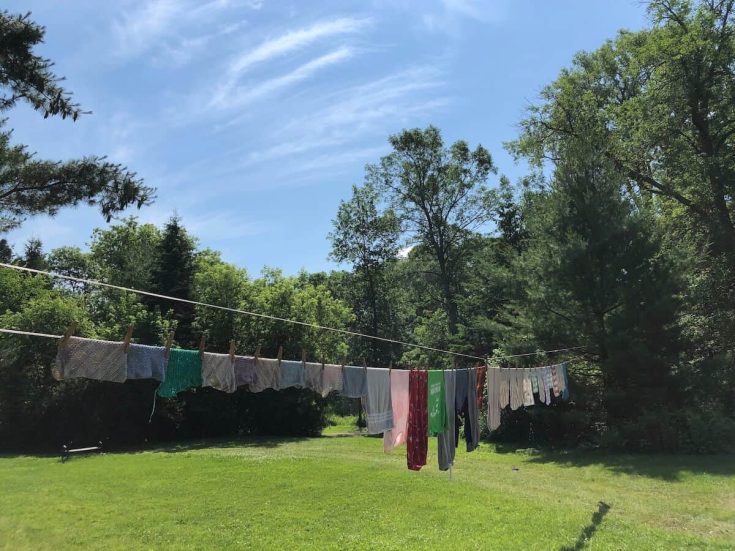
Learn to live a simple life, right where you are, starting with these 25 tips.
Instructions
- Start a garden
- Cook from Scratch
- Eat seasonally
- Buy food in bulk
- Learn to preserve food
- Air dry your clothes
- Use less electronics
- Buy things second-hand
- Mend and make-do
- Reduce clothing
- Create daily, weekly, and seasonal routines
- Reduce clutter
- Have a place for everything
- Reduce waste
- Consider homeschooling
- Frequent your library
- Make your own personal care & cleaning products
- Be proactive about your health
- Use cash for in-person purchases
- Create a budget
- Avoid debt
- Prepare for emergencies
- Become self-employed
- Avoid taxes
- Move to a small town or homestead
Recommended Products
As an Amazon Associate and member of other affiliate programs, I earn from qualifying purchases.
Pin It for Later
